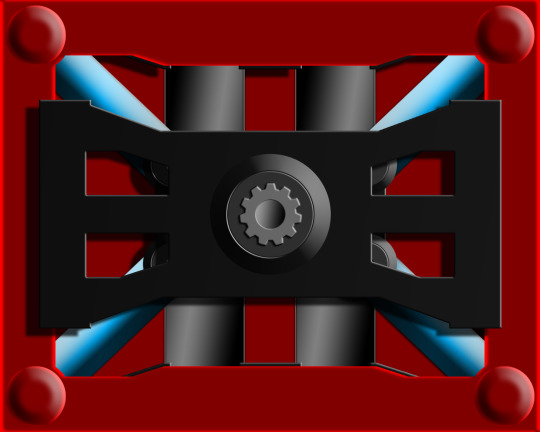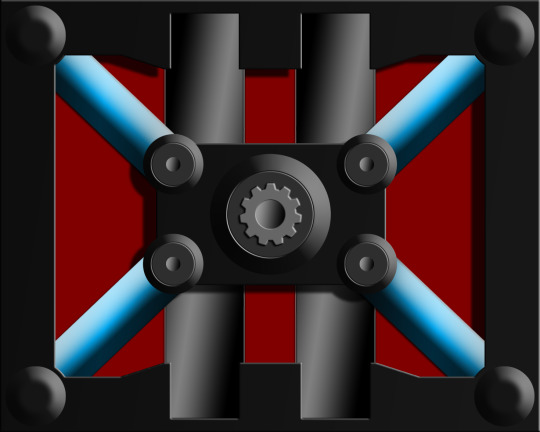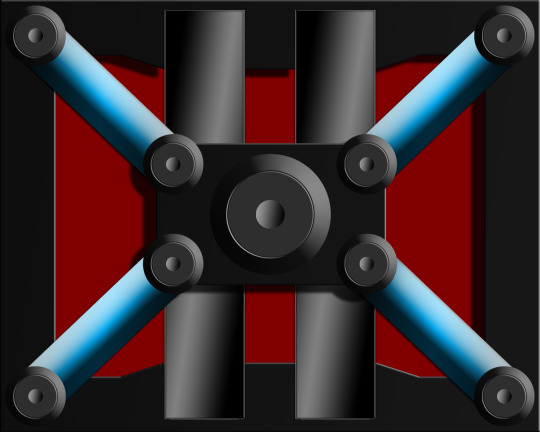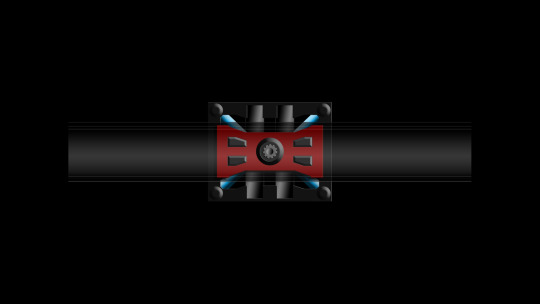#Amplitude Modulation (AM)
Explore tagged Tumblr posts
Text
Cyanobacteria, an ancient lineage of bacteria that perform photosynthesis, have been found to regulate their genes using the same physics principle used in AM radio transmission. New research published in Current Biology has found that cyanobacteria use variations in the amplitude (strength) of a pulse to convey information in single cells. The finding sheds light on how biological rhythms work together to regulate cellular processes.
Continue Reading.
#Science#Biology#Microbiology#Molecular Biology#Cyanobacteria#AM#Amplitude Modulation#Circadian Rhythm
76 notes
·
View notes
Text
The History Of Television
Television refers to a system for transmitting visual images and sound that are reproduced on screens, primarily to broadcast programs for entertainment, information, and education. History of Television Early Concepts and Development: 1870s-1900s: The concept of transmitting images wirelessly dates back to the late 19th century. Paul Nipkow’s invention of the Nipkow disk in 1884 was an early…
#4K#8K#ABC#Amazon Prime Video#Amplitude Modulation (AM)#Analog TV Waves#broadcast#cable television#cathode ray tube (CRT)#CBS#Charles Francis Jenkins#Color television#digital streaming services#Digital TV Waves#DigitalTelevision#Electromagnetic Waves#Frequency Modulation (FM)#gamma rays#HD#HDTV#High-Definition Television#History Of Television#Hulu#infrared#John Logie Baird#Light Emitting Diode (LED)#Liquid Crystal Display (LCD)#microwaves#Modulation#NBC
4 notes
·
View notes
Text
My theory regarding: There's Better Be A Mirrorball by Arctic Monkeys
[PART 1]

In 2013 Arctics published an album called AM. An album that could stand for many things some ideas of what it could be is...
After Midnight / Amplitude Modulation / Alex Miles
in 2016 a TLSP song was published with a film called: Miracle Aligner. The first two letters of each word start with Mi & Al. Remind you of anything or rather anyone familiar? To me reminds me of Miles and Alex.
MI-racle Al-igner.
There'd Better Be A Mirrorball makes me think of something or someone's similar...
MI-rrorb-AL-l. That's literally Alex and Miles' first two initials of their first names nature within the word mirrorball itself. Coincidence for the song by AM? I THINK NOT. Also what's funny in a positive sense to me is Mirrorball and Miracle Aligner sound similar because of 'Mir' and 'al' sounds. Is this a coincidence even? I THINK NOT ALSO!



Images borrowed from pinterest
#milex#alex turner#miles kane#bacusdraculacape#arctic monkeys#am#am theory#the car#there'd better be a mirrorball#part two gonna be publizhed to this later tonight when i get another free minute promise 🤞😎#There'd be AMI-rrorb-AL-l 🪩#🪩
40 notes
·
View notes
Text
am radio is amplitude modulation and fm is frequency modulation.. so xm radio is...? fucking xanax modulation??
3 notes
·
View notes
Text
Random hazbin hotel thoughts/HC/shitposts that've been bouncing through my skull:
- Alastor doesn't hate new technology for no reason, he spent a fortune on a RCA 44A microphone in 1933 and hell or high water he's getting his money's worth out of it and he's stubborn
-(I know Cannibal Town is supposed to look like an American town) but it matches up with the Victorian era and therefore I'm claiming it's that way for the same reason mummies are rare. Eating mummy counted as cannibalism
- if radioapple got married, alastor would take the last name Morningstar specifically because his initials could be AM like Amplitude Modulation.
- when vox had a CRT for a head, if you put a magnet near him, his face got messed up
- you can briefly make vox's screen blackout via static electricity shock. In a similar manner, velvette sometimes sticks balloons on his face out of boredom
6 notes
·
View notes
Text
Have you ever wondered why morning is called AM and evening is called PM?
AM stands for Amplitude Modulation, which basically means changing how strong the energy/light is. This is why early morning light often feels softer and more pleasant!
PM stands for Pulse Modulation, which refers to adjusting the pattern or rhythm of a given electromagnetic wave. Have you ever felt the sun literally "beat"ing down on you I the afternoon? That's why!
Hope that helps!!
2 notes
·
View notes
Text

they just will pretend fascists BUY THERE PLACE IN SOCIETY ... THIS GIF IS CRAZY .. NEVER HURT ANIMAL'S..

I want you to remember: TO EAT SALAD!! ITS FRIDAY & TIME TOO TAKE OFF ALL THAT PESKY HAIR

looks like she has found lunch ..



yes...... that is what i am doing !
import numpy as np import matplotlib.pyplot as plt from typing import Optional
class EMFCommunicationDevice: def init(self, sample_rate: int = 10000, duration: int = 1): """ Initialize the EMF communication device. Args: - sample_rate (int): Sample rate of the signal (default=10000 Hz) - duration (int): Duration of the signal (default=1 second) """ self.sample_rate = sample_rate self.duration = duration self.FREQUENCY_CARRIER = 2000 # Carrier frequency in Hz self.MODULATION_INDEX = 5 # Modulation index for frequency modulation self.t = None self.signal = None def message_to_binary(self, message: str) -> str: """ Convert a message to a binary representation. Args: - message (str): The input message Returns: - binary (str): Binary representation of the input message """ binary_string = ''.join(format(ord(c), '08b') for c in message) return binary_string def generate_fm_signal(self, binary_message: str) -> tuple: """ Generate a frequency-modulated signal based on a binary message. Args: - binary_message (str): Binary representation of the message to transmit Returns: - t (numpy.ndarray): Time array for the signal - signal (numpy.ndarray): Frequency-modulated signal """ t = np.linspace(0, self.duration, int(self.sample_rate * self.duration), endpoint=False) signal = np.zeros_like(t) for bit in binary_message: if bit == '1': frequency = self.FREQUENCY_CARRIER + self.MODULATION_INDEX else: frequency = self.FREQUENCY_CARRIER - self.MODULATION_INDEX signal += np.sin(2 * np.pi * frequency * t) return t, signal def plot_signal(self, t: np.ndarray, signal: np.ndarray) -> None: """ Plot the frequency-modulated signal. Args: - t (numpy.ndarray): Time array for the signal - signal (numpy.ndarray): Frequency-modulated signal """ plt.figure(figsize=(10, 4)) plt.plot(t, signal) plt.title("Frequency Modulated Signal") plt.xlabel("Time (s)") plt.ylabel("Amplitude") plt.xlim(0, self.duration) plt.grid() plt.show() def transmit_signal(self, message: str) -> None: """ Transmit a message via a frequency-modulated signal. Args: - message (str): The message to transmit """ binary_message = self.message_to_binary(message) print(f"Binary Representation of Message: {binary_message}") t, signal = self.generate_fm_signal(binary_message) self.t = t self.signal = signal self.plot_signal(t, signal) def run_device(self) -> None: """ Run the EMF communication device. This includes transmitting a default message, "Hello!". """ print("Running EMF Communication Device...") self.transmit_signal("Hello!")
if name == "main": # Create an instance of the EMF communication device device = EMFCommunicationDevice()# Run the EMF communication device device.run_device()

I want too meat her!! she told me the The fascists hate me i couldn't ever imagine why ...

really get it up in there Donna
I want you to remember:
The fascists hate you too and they just will pretend otherwise until after they've killed the rest of us, before they turn on you.
#lunch bags#Bangladesh#pakistan#impactnews#infrastructure#sri lanka#humor#hello world#memes#art#Donna
212K notes
·
View notes
Link
[ad_1] - Advertisement - Communication systems form the backbone of modern technology, enabling the transfer of information across various platforms. At the heart of these systems lies modulation, a technique used to encode information onto carrier waves. Modulation is crucial for efficient signal transmission over long distances and across different mediums. There are two primary types of modulation: analog and digital. Amplitude Modulation (AM) and Frequency Modulation (FM) are fundamental analog techniques, commonly used in radio and television broadcasting. Digital modulation methods, including Amplitude Shift Keying (ASK), Frequency Shift Keying (FSK), and Phase Shift Keying (PSK), play a pivotal role in modern communication systems such as wireless networks, optical fiber transmission, and telemetry. LabVIEW a powerful graphical programming tool, offers an interactive environment for simulating both analog and digital communication systems. It provides real-time visualization and control of system parameters, making it an ideal platform for understanding modulation and demodulation processes. By simulating these techniques, engineers and students can gain a deeper understanding of how different modulation schemes work and their applications in real-world communication systems. This article delves into the key modulation techniques and demonstrates their simulation using LabVIEW, providing valuable insights into both theory and practical implementation. Modulation Techniques: Modulation techniques are essential for transmitting information over communication systems. Amplitude Modulation (AM) involves varying the amplitude of a carrier wave in proportion to the message signal and is widely used in radio broadcasting. Frequency Modulation (FM) alters the frequency of the carrier wave according to the message signal, offering better noise resistance and clear reception, making it ideal for radio and wireless communication. Phase Modulation (PM) modifies the phase of the carrier wave relative to the message signal, used in applications like satellite communication and digital data transmission for efficient bandwidth use and noise resilience.- Advertisement - 1. Amplitude Modulation (AM) is a modulation technique used in analog communication systems to transmit information by varying the amplitude of a carrier wave in proportion to the waveform being sent. In AM, the amplitude of the carrier signal is varied according to the amplitude of the modulating signal (also known as the message signal). The modulation process involves multiplying the carrier signal by the modulating signal to produce the modulated waveform. The modulated signal consists of the carrier wave with sidebands around it, carrying the information from the modulating signal. AM is widely used in broadcast radio transmissions and some shortwave communications. Expression of AM Where, s(t) Amplitude Modulated Signal, m(t) Message Signal, c(t) Carrier Signal Fig. 1. General Block Diagram of AM 2. Frequency Modulation (FM) is a modulation technique used in communication systems where the frequency of the carrier signal is varied in proportion to the amplitude of the modulating signal. As the amplitude of the modulating signal changes, the frequency of the carrier signal shifts accordingly. FM is commonly employed in radio broadcasting and wireless communication due to its resistance to noise and interference, which results in clearer reception compared to other modulation techniques like Amplitude Modulation (AM) as in Fig.1. FM allows for efficient transmission of audio signals with high fidelity and is also used in various data communication applications. Expression of AM Where, s(t)= Output Signal, c=Carrier Frequency, β=Modulation Index Fig. 2. General Block Diagram of FM 3. Phase Modulation (PM) is a modulation technique used in communication systems where the phase of the carrier signal is varied in proportion to the amplitude of the modulating signal. Unlike Frequency Modulation (FM), which varies the frequency of the carrier signal, PM directly modifies the phase. PM is closely related to FM, and both techniques are often used interchangeably in practical applications. PM is used in various communication systems, including telecommunications, satellite communication, and digital data transmission. It offers advantages such as efficient use of bandwidth and robustness against noise and interference. Fig. 3. General Block Diagram of PM Expression of PM Where, mp=Phase Senstivity Factor Software Design LabVIEW (Laboratory Virtual Instrument Engineering Workbench) is a graphical programming environment developed by National Instruments. It is widely used for designing and implementing complex measurement, test, and control systems. LabVIEW’s intuitive visual programming language allows users to create programs by wiring together functional blocks, making it accessible for users without extensive coding experience. The platform is particularly valuable for simulating and analyzing communication systems, automating data acquisition, and controlling hardware. Its powerful tools and real-time visualization capabilities facilitate the development of sophisticated systems and provide an interactive interface for users to dynamically adjust parameters and view results. Amplitude Modulation Fig. 4. Block Diagram and Front Panel – AM in LabVIEW Fig.5. Simulation and Results of Amplitude Modulation FREQUENCY MODULATION Fig. 6. Block Diagram and Front Panel – FM in LabVIEW Fig.7. Simulation and Results of Frequency Modulation PHASE MODULATION Fig. 8. Block Diagram and Front Panel – PM in LabVIEW Fig.9. Simulation and Results of Phase Modulation Conclusion: LabVIEW offers a practical platform for implementing and simulating Amplitude Modulation (AM), Frequency Modulation (FM), and Phase Modulation (PM). Students can visualize and interact with modulation processes using LabVIEW’s graphical programming environment, which simplifies the complex mathematics behind these techniques. By creating simulations, students can experiment with different parameters and observe their effects on the modulated signals in real-time. This hands-on approach enhances understanding of how modulation works and its applications. LabVIEW’s interactive features make it easier for engineering students to grasp these fundamental concepts, reinforcing theoretical knowledge through practical, visual experimentation. [ad_2] Source link
0 notes
Text

I've been seeing some people being confused in the notes so,,,
While modern radios have way more elements than this, if the signal is strong enough that's technically all you need. ... okay and some wire i suppose.
Because radio waves are electromagnetic and they oscillate, they create a small current in a conductor (that's induction!). The diode together with a person holding it serves to "decode" the radio signal. The diode rectifies it and the person, acting as an antenna, both picks up the signal and acts as a crude low pass filter. That's all you need to decode an AM (amplitude modulated) signal. With the magnet and tin can, you can make a speaker to then listen to that decoded signal. Mind you that this would be an untuned radio, picking up many frequencies at the same time. You'd hear them overlap.
I intentionally said AM and not FM because the latter is not that easy to decode and would need additional materials.
In this post I'm slightly exaggerating how easy it'd be to listen to a signal like that with some quality but technically with a strong signal it's absolutely possible and even if you do add some more elements to make the signal clear and specific you still wouldn't need an additional power source. The only thing an AM radio typically needs a power source for is a sound amplifier, but if you use high impedance (2k Ohm) headphones you don't need that. The catch is that these can be hard to find these days, but you can still make them out of e.g. piezoelectric buzzers or indeed a magnet and a tin can.
AM radio is like literal magic. There is music all around us that we can't hear, and to hear it you just have to tap a crystal (diode) to the earth and listen to it with another magic rock (magnet) and a tin can. You dont even need electricity to make it work because this music around us is literally all the power you need. Oh and at night when the sun has set, the light of the day gets replaced by MORE music because the signals can travel further at night. This is magic. If you even care.
30K notes
·
View notes
Text
ECE300 Analog Modulation Simulation Project
The goal of this project is to explore the effects of noise on frequency modulation (FM), phase modulation (PM) and two kinds of amplitude modulation (conventional AM, SSB AM). In class, we discussed the theoretical performance of these schemes in the presence of noise, and compared them in terms of bandwidth efficiency, power efficiency and ease of implementation – no scheme is “the best”, and…
0 notes
Text
0 notes
Text







So we are going to see the suspensions of the bike, starting with the top frame that we will extrapolate vertically
As such we have a square format, where I guess 80% height would do, we are looking at a suspension module height, and exact width
continue later
Laters
continued: main above and below, and assist on the sides at 45° each, to balance from one end to the other like we said, and inserts where the x frame attaches to the blocks
I guess main would be coils and assist would be pneumatic, or oil based, or all pneumatic or all oil based, which ever works best
they have a base so that they stay straight, they're either oil or pneumatic I guess, or both, pistons at any rate
in effect the blocks float within the bike, we needed that gear in the middle so that we can have a balancing motion, the inserts on the sides are more straightforward
is it settable, well now that we have a gear I guess, if you tighten or loosen the gear the suspension should change accordingly, we are not going to lose the blocks since those gears are fix it's just how much grip they have
it is different, doing things differently should come with the brand
amplitude wise we see that it's racing bike stuff, however the blocks are suspended below and above, so factor that, and also each block has 2 such modules or 4 in total for the bike
it's a lot of suspension settable how you want it, stiffer on top or below or harder or softer overall, there's options, after that I don't play with suspensions too much, I find one that I like drive accordingly
I think I like this one because it looks like you can't go wrong with it, and yes we are also looking at the car and the RV
maybe there's some suspension heads who think it's too stiff, so here the main ones they do nothing, they just support the weight of the blocks, I think they're pneumatic, or oil they could be oil, and that positions the coils on the assists
bottom line you could have coils in main, oil or pneumatic even in the assists, or all coils all pneumatic all oil, stuff below that's different from above, the range of options is dizzying
and so what would I have, oil for main and Kevlar coils for the assists, Kevlar coils can be just like you want them, responsive for the assists,and oil is a wildcard for just about anything
that way I could balance the bike just like I want with the right Kevlar coils for assists, and oil would be there to catch mishaps on mains
BUMPER Suspensions
Thank you for having followed
design notes: a bit of explaining further what we did here for those who follow BCS, have been so far, or aren't familiar with suspensions or mechanics in general basically we split the support of motor blocks and balancing the blocks
so we have mains and assists, mains bear and suspend the blocks as a whole and assists, in blue, allow for balancing these blocks and tires end to end, which I guess was the only way to do it given the format but if you do find another way I am interested
how did we split both, that's a good question, a component goes up and down on main, now that same component because it is tied to a vertical axis could not be tapped into for balancing the blocks, so on top of it we have another piece with rotating gear,
and so you see that now we have both a vertical axis and rotational axis, weight is supported and the blocks can be balanced without requiring large assists to achieve that since they do not bear the weight of these blocks only shift them from side to side
last but not least assists have bearings on both end, which allows for a full range of motion and being tied to that of mains, its several component doing different things while acting as one
problem solving all of it, although like I said engineering is in my conception much more about creating opportunities, while solving problems, than just here's the problem how do we solve it, the reality is that problems allow you to do other stuff that often you had no idea about, the opportunity here was the gear that can allow us to harden of soften this suspension as a whole, ie make it settable
continued: we added a visual vs motors block height, and changed background and support frame colors to make things more evident, so 80% height for these modules turned out to be it
next at 325% of this same motor section width we have the entire motor block incl the sections that are inside the tires, minus hubs minus entire tire width, so really the motors block in itself, as we can see its well balanced in the center, I guess we can call these suspension modules a success
0 notes
Text
This is all from memory, but:
AM is amplitude moderation(modulation?), the signal is changing in amplitude ('loudness') to encode the soundwave. It can travel far with low energy, but it can't transmit polyphonic sound well - it works better with narrow frequency bands of sound. So AM stations are usually talk radio because speech is pretty narrowband.
FM is frequency modulation, the signal is encoded by changing the frequency (wavelength). It can't travel as far, but it transmits with very high fidelity - there's even extra bandwidth left to encode text (how some cars show the artist and song title for radio).
As far as I know, marketers prefer FM because it has greater listenership. So it's easier to sell ads for FM radio.
Fewer and fewer radio stations have employees at the tower locations since the internet allowed it. Towers are sometimes in difficult-to-access locations & typically require little maintenance. The building was likely empty for years before the tower failed.
“What do you mean the tower is gone? Are you sure you’re in the right place? I actually used more colorful words than that,” Brett Elmore recounted to NBC News. “He said there’s wires all over the ground and the tower is gone.”
60K notes
·
View notes
Text
AFG-2225 Function Generator – 25MHz Importer and Supplier in Bangladesh | Anonna Mart
Looking for a reliable function generator with advanced features? The GWInstek AFG-2225 offers superior performance with its 25MHz bandwidth and dual-channel functionality. This model is perfect for various applications, including laboratory research, educational projects, and industrial usage. Available in Bangladesh through Anonna Mart, this function generator ensures high precision and versatility. GWInstek AFG-2225 25MHz Dual-Channel Arbitrary Function Generator.
Key Features of AFG-2225 Function Generator – 25MHz
1. High-Performance Frequency Range
Wide frequency range from 1μHz to 25MHz. 1μHz resolution ensures precision for any waveform. Multiple standard waveforms: Sine, Square, Ramp (Triangle), and Noise.
2. Dual-Channel Capability
True dual-channel output, with both channels offering identical characteristics. Supports couple, tracking, and phase functions for correlated signals. Ideal for applications such as differential or IQ signaling.
3. Arbitrary Waveform Editing
66 built-in arbitrary waveforms with customization options. PC software for editing and modifying waveforms. Supports CSV file import for advanced waveform design.
4. Advanced Signal Modulation
Supports AM, FM, PM, FSK, SUM Modulation, Sweep, and Burst functions. Frequency counter for additional measurement capabilities. High accuracy with ±20ppm stability.
5. User-Friendly Interface
3.5-inch color TFT LCD for clear operation display. USB Host and Device interfaces for remote control and data transfer. Easy navigation and instant parameter display.
Why Choose AFG-2225 Function Generator – 25MHz?
Reliable Performance for Multiple Applications
Power supply and transformer simulations. Automotive electronics testing. Pulse signal generation for synchronization. Laboratory research and educational purposes.
Enhanced Output Characteristics
10Vpp output amplitude ensures strong signal transmission. Adjustable duty cycle (1%–99%) for pulse applications. 50Ω impedance switch function for flexible testing.
Seamless Connectivity & Integration
Compatible with GWInstek GDS-series Digital Storage Oscilloscopes (DSOs). Waveforms can be captured and reconstructed easily. Data can be transferred via USB flash drive or direct PC connection.
Technical Specifications
Frequency & Waveform Characteristics
Frequency range: 1μHz to 25MHz. Sample rate: 120MSa/s. Resolution: 10-bit, 4k-point waveform length. Waveforms: Sine, Square, Ramp, Pulse, Noise, ARB.
Output & Modulation Features
Amplitude range: 1mVpp to 10Vpp (into 50Ω). Phase adjustment: -180° to +180°. Sweep mode: Linear and logarithmic. Modulation: AM, FM, PM, FSK, SUM.
Connectivity & Display
USB Host/Device interface for waveform transfer and remote control. Display: 3.5-inch TFT color LCD. Power supply: AC100 ~ 240V, 50 ~ 60Hz.
Where to Buy AFG-2225 Function Generator – 25MHz?
For those looking for the best function generator supplier in Bangladesh, Anonna Mart is the trusted importer and distributor. They provide competitive pricing, reliable after-sales support, and fast delivery across the country.
Final Thoughts
The GWInstek AFG-2225 is a powerful and versatile 25MHz function generator with dual-channel capabilities, high-precision signal output, and extensive modulation features. Whether you’re a researcher, engineer, or educator, this function generator provides exceptional performance and value. Get yours today from Anonna Mart, the leading supplier in Bangladesh.

#cathode ray oscilloscope#oscilloscope#functions of generator#signal generator#generation of signals
0 notes
Text
The History of AM Radio and Its Impact on the U.S. Auto Industry
In view of the current fight to keep AM radio in American vehicles, here’s a brief history of it’s impact AM (Amplitude Modulation) radio played a crucial role in shaping both American culture and the automobile industry, providing entertainment, news, and connectivity for drivers. From its early beginnings to its decline in the digital age, AM radio transformed how Americans traveled, commuted,…
0 notes
Text
How CWNA Certification Increase Your Understanding of RF Fundamentals

Wireless networking is increasingly important in today's digital landscape, and understanding Radio Frequency (RF) fundamentals is crucial for ensuring efficient, high-performance networks. The CWNA (Certified Wireless Network Administrator) certification provides in-depth knowledge of RF concepts, empowering professionals to design, implement, and troubleshoot wireless networks effectively.
By enrolling in a CWNA course, you can gain valuable expertise in key areas such as signal propagation, spectrum analysis, interference management, and antenna design. This blog explores how the CWNA certification enhances your understanding of RF fundamentals and prepares you to tackle real-world wireless networking challenges.
What is RF Fundamentals in Wireless Networking?
Radio Frequency (RF) fundamentals refer to the basic principles governing the use of radio waves to transmit data wirelessly. In wireless networking, RF is the key medium for communication between devices, enabling Wi-Fi, Bluetooth, cellular networks, and other wireless technologies. Understanding RF fundamentals is essential for network administrators to ensure proper design, deployment, and optimization of wireless networks. These concepts include the behavior of radio waves, the importance of frequency bands, the challenges posed by signal interference, and techniques for maximizing network efficiency.
The Importance of RF Knowledge for Wireless Network Administrators
For wireless network administrators, a solid understanding of RF fundamentals is vital to the success of network installations and maintenance. Here's why:
Network Performance: RF knowledge helps in optimizing signal strength, range, and coverage. Poor understanding can lead to issues like dead zones, poor throughput, or interference.
Troubleshooting: When network issues arise, an administrator with RF knowledge can quickly identify and resolve problems, such as interference or signal attenuation.
Design & Planning: Proper RF understanding ensures the network is designed for maximum efficiency and minimal interference. This knowledge is essential for site surveys, choosing access point locations, and planning bandwidth usage.
Security: RF security is an often-overlooked aspect of wireless networks. With proper RF knowledge, administrators can safeguard against eavesdropping, jamming, and unauthorized access.
Key RF Concepts Covered in CWNA Certification
The CWNA (Certified Wireless Network Administrator) certification is designed to enhance a professional's understanding of RF fundamentals. Key concepts covered include:
RF Propagation: How radio waves travel through the air and interact with obstacles, surfaces, and different environments.
Frequency Spectrum: The range of frequencies used for wireless communications, including licensed and unlicensed bands.
Modulation Techniques: The methods by which information is encoded onto radio waves, including Frequency Modulation (FM), Amplitude Modulation (AM), and Phase Modulation (PM).
Signal-to-Noise Ratio (SNR): The ratio of the signal power to background noise, which impacts the quality and reliability of wireless communication.
Antenna Types and Design: Different antennas' role in signal transmission and reception, such as omni-directional, directional, and sectoral antennas.
Understanding Radio Frequency Spectrum and Its Role in Wireless Networks
The RF spectrum is divided into a range of frequencies, each with different characteristics. Understanding these frequencies is crucial for wireless network administrators because:
Frequency Bands: Wireless networks operate within specific frequency bands (e.g., 2.4 GHz, 5 GHz). These bands have different propagation characteristics, with higher frequencies offering faster speeds but shorter range and lower frequencies offering greater coverage but slower speeds.
Channel Allocation: CWNA certification helps administrators understand how channels are allocated within these bands and how to select the best channels to avoid interference from neighboring networks.
Interference Management: By understanding the spectrum, administrators can manage interference from other wireless devices, including microwaves, cordless phones, and Bluetooth devices, ensuring smooth network performance.
RF Interference and Its Impact on Wireless Network Performance
RF interference is one of the most common issues in wireless networking. Several factors can cause interference, such as:
Other Wireless Networks: Nearby wireless networks operating on the same or overlapping channels can cause congestion and performance degradation.
Physical Barriers: Walls, metal objects, and other materials can block or attenuate RF signals, resulting in weak or inconsistent coverage.
Environmental Factors: RF interference can also come from devices like microwave ovens, baby monitors, and Bluetooth devices.
The CWNA certification provides tools and techniques for identifying and mitigating these issues, ensuring that wireless networks are both reliable and high-performing.
CWNA’s Focus on Antennas and Their Role in RF Design
Antennas are critical to RF design and network performance. The CWNA certification emphasizes:
Types of Antennas: Understanding the differences between omnidirectional, directional, and sectoral antennas helps in selecting the right antenna for specific network environments.
Antenna Placement: Proper antenna placement is key to ensuring optimal signal strength and coverage. CWNA teaches administrators how to place antennas strategically to minimize interference and maximize coverage.
Antenna Gain and Directivity: CWNA covers how antenna gain influences signal strength in a particular direction, impacting both range and capacity.
RF Troubleshooting Techniques Taught in CWNA
RF troubleshooting is a crucial skill for network administrators. The CWNA certification provides various techniques for resolving common RF issues, including:
Signal Attenuation: Identifying and mitigating signal loss due to distance, obstacles, or environmental conditions.
Interference Detection: Using tools like spectrum analyzers to detect and analyze RF interference sources.
Site Surveys: Conducting site surveys to assess RF performance, identify dead zones, and determine the optimal placement for access points.
These troubleshooting skills are essential for maintaining a stable and efficient wireless network.
How CWNA Certification Prepares You for Real-World RF Challenges
The real-world application of RF knowledge is critical for network administrators. CWNA certification prepares professionals for the following challenges:
Network Expansion: As businesses grow and expand, networks need to be scaled. CWNA teaches how to design and implement scalable wireless networks using RF principles.
Dense Environments: In environments with many devices, such as offices or public spaces, RF knowledge helps in managing high-density areas to avoid congestion and interference.
Advanced Troubleshooting: CWNA prepares administrators to deal with complex RF issues, from subtle interference to large-scale network failures.
The Role of RF Fundamentals in Optimizing Wireless Network Coverage and Capacity
A deep understanding of RF fundamentals is crucial for optimizing network coverage and capacity. With the knowledge gained through CWNA, administrators can:
Improve Coverage: Proper RF design ensures that signals are strong and consistent across the network, minimizing dead zones and signal loss.
Maximize Capacity: By optimizing channel selection, antenna placement, and interference management, network administrators can maximize the number of devices supported on the network without sacrificing performance.
Mastering RF Design and Planning with CWNA Certification
Mastering RF design and planning is essential for creating efficient wireless networks. The CWNA certification equips professionals with the following skills:
Designing for Capacity and Coverage: CWNA teaches how to balance capacity and coverage requirements in wireless network design, ensuring that both are optimized.
Frequency Planning: It covers techniques for selecting the best frequencies and channels, considering both network requirements and environmental factors.
Best Practices: CWNA highlights best practices for RF network planning, from site surveys to implementing mesh networks and optimizing throughput.
Conclusion
The CWNA Course provides a comprehensive understanding of RF fundamentals, empowering wireless network administrators to design, implement, troubleshoot, and optimize wireless networks effectively.
From understanding the RF spectrum to mastering antenna placement and solving interference issues, CWNA equips professionals with the skills needed to address real-world challenges. By enhancing your RF knowledge, you can ensure network performance, reliability, and security, making you a valuable asset in the rapidly evolving field of wireless networking.
0 notes